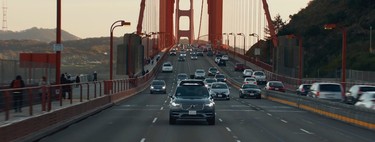Autonomous driving systems seem to evolve at two different speeds. At the moment, they work satisfactorily only where a large company has taken special interest. In those places where traffic agents multiply and their movements are unpredictable, they continue to fail. And cyclists are one of the most affected groups.
the most advanced. As we said, autonomous driving seems to evolve at two speeds. For the most advanced services, it is necessary to have maximum involvement on the part of the companies, with intensive mapping of the land and significant restrictions on its use.
Mercedes has chosen with its Drive Pilot to limit it to small spaces and mapped by themselves, on high-speed roads and far from towns. And at a maximum of 60 km/h. That is to say, places and speeds where unforeseen events are reduced to a minimum. Waymo or Cruise already operate in some American neighborhoods with fully autonomous vehicles, but both companies have had to make a significant investment in studying the spaces through which the vehicles can circulate.
the unpredictable. Chance and the unexpected are the two great challenges facing autonomous driving systems. BMW, for example, has its own campus to develop autonomous driving but they have a problem: each day of simulation, their vehicles collect an amount of data that is measured in Petabytes. It is such a volume that one of the main difficulties involves the management of said data.
Tesla has long faced the same problem. Despite the fact that the drivers subscribed to its Autopilot are their own testers on the street, the brand continues to have problems in the detection of pedestrians and cyclists. In fact, his problems related to autonomous driving have earned him more than one NHTSA investigation.
long haul. Despite the fact that semi-autonomous driving systems are advancing (and in fact ADAS driving aids are mandatory in all new vehicles approved since May), cyclists and pedestrians have long been one of the biggest problems for drivers. manufacturers.
In fact, the first accident with a fatality dates back to 2018, when a woman who was crossing a road on foot next to a bicycle, at night and in a place not allowed, was hit by an Uber vehicle. The case came to paralyze the tests that the company was carrying out in the United States.
one in three. Four years after that day, the American Automobile Association (AAA) has pointed out in a report that semi-autonomous driving systems are still unsatisfactory when it comes to avoiding accidents with cyclists, according to their own study in which they analyzed the technologies of the Hyundai Santa Fe, the Subaru Forester and the Tesla Model 3 with their respective level 2 semi-autonomous driving systems.
In its tests, the AAA tested autonomous driving systems in two scenarios. In the first, the vehicle approached the cyclist from behind. In the second, the cyclist was crossing the path of the vehicle, creating an emergency situation. In the first scenario, the adaptive cruise control of all the vehicles acted correctly but, in the second, the Subaru Forester did not detect the cyclist on any occasion and did not apply the brakes to avoid an accident.
Emergency situations. The unpredictable, once again, is the challenge of autonomous driving and where there is more hope in this type of technology. It must be taken into account that it is about improving human capacities and that, at the moment, the vehicles still do not correctly detect this type of traffic agent.
In the results of these tests, the Tesla Model 3 managed to avoid the accident on all occasions and, on average, was almost 400 meters from hitting the cyclist. The Hyundai Santa Fe, however, was much further away and much of its success was due to its quick ability to detect the possible victim, with reaction times always below a second.
Warning. The AAA has also wanted to launch the same notice that the Insurance Institute for Highway Safety (IIHS, for its acronym in English) sent some time ago. In both cases, they have warned of the messages launched by companies related to these autonomous driving systems, which they describe as too optimistic in their advertising campaigns. According to the AAA, in 2018, 40% of drivers believed that the Autopilot name referred to full autonomous driving.
Photo: Li Lin
George is Digismak’s reported cum editor with 13 years of experience in Journalism
